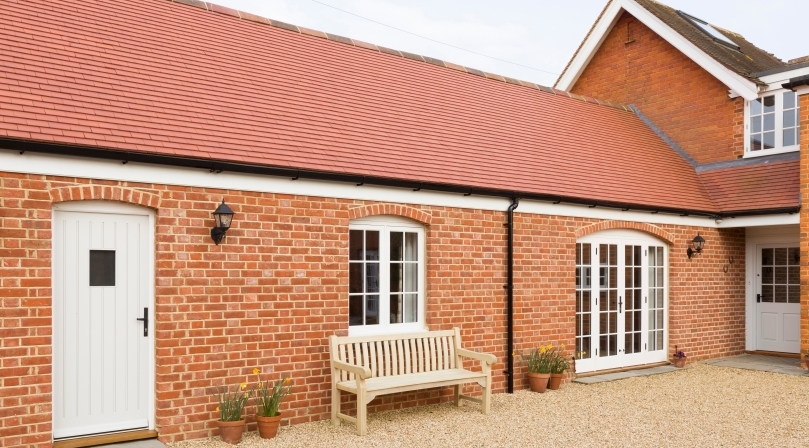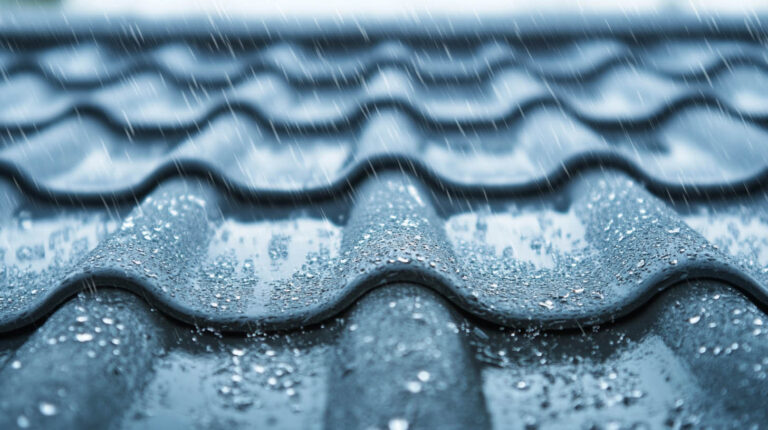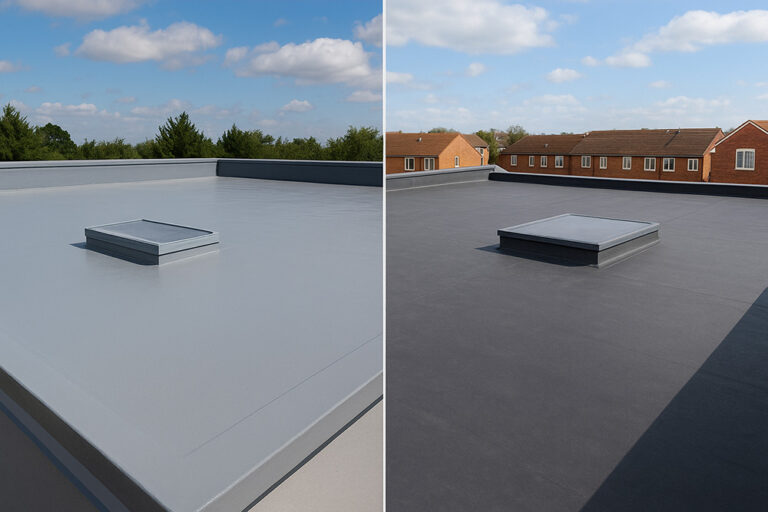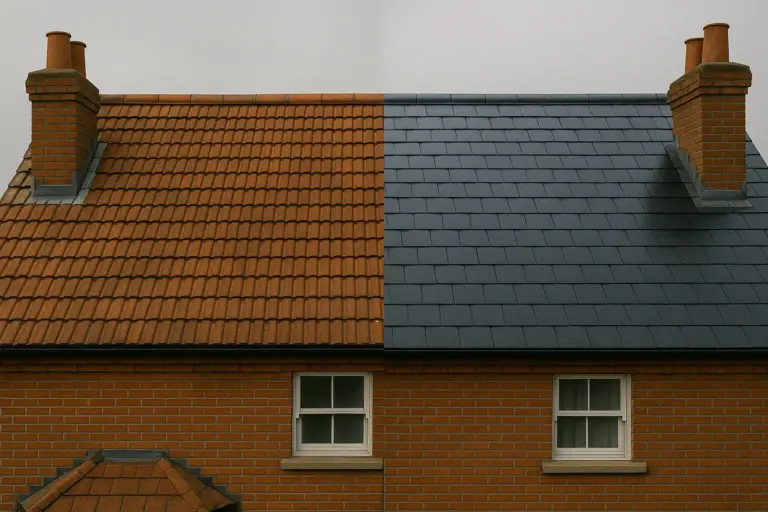Few features alter the perception of a home quite so dramatically as the roof. Across Britain’s diverse range of architectural styles, the roof frequently occupies at least a third of a property’s visible façade. Whether glazing in rare sunlight, shedding rain, or sheltering inhabitants from a wet November, the roof does so much more than protect. It quietly underpins a home’s aesthetic and market value alike.
More than Just Shelter
For many homeowners, the roof represents little more than a practical necessity—something to keep leaks and drafts at bay. Yet, when viewed from the street or by potential buyers, the roof often becomes the single largest unbroken element they register. Worn tiles or sagging lines can silently broadcast neglect, while a newly installed roof suggests pride of ownership.
Colour, texture, pitch, and symmetry all contribute to a harmonious or jarring impression. Britain’s eclectic patchwork of roofs—from the slate-topped terraces of Yorkshire to the clay tiles of Surrey—gives each home its unique signature. New materials, inventive profiles, and updated installation techniques provide unprecedented freedom for homeowners eager to put their own stamp on a property.
Curb Appeal and Perception
Estate agents and surveyors consistently cite “curb appeal” as a leading factor in attracting prospective buyers or tenants. A new roof instantly refreshes a home’s outward appearance and reassures passers-by of the building’s structural soundness.
Perceptions aren’t merely superficial. When a home receives a new, professionally installed roof (and is free from issues like moss, cracks, or displaced shingles) viewers tend to assume that the rest of the property has been cared for with the same diligence. In competitive housing markets, this impression alone can drive up interest and valuations.
Consider the following points often assessed by potential buyers as they view a property:
- Overall uniformity and colour match
- Clean lines and absence of patch repairs
- Modern or traditional styling in keeping with the local area
Architectural Harmony and Individuality
A roof acts as a silent partner to external walls, windows, and landscaping. When refreshed or replaced, it can dramatically update the personality of a house, or restore balance after ill-judged alterations.
Choices abound. Slate provides gravitas and is often required in conservation areas, while clay tiles inject warm Mediterranean hues. For modern builds, sleek metal or composite panels can add distinctive geometric interest. Some homeowners select green or “living” roofs, transforming the uppermost surface into a garden, which not only catches the eye but also signals eco-awareness.
Blending in or standing out is often a deliberate decision, driven by personal taste or the guidance of architects. Either route, professional input ensures the desired effect complements, rather than clashes with, the home’s other assets.
Typical Roofing Materials in the UK
Material | Characteristics | Typical Locations |
|---|---|---|
Natural Slate | Durable, consistent colour, up to 100 years’ lifespan | Wales, Northern England |
Clay Tiles | Earthy tones, traditional appearance | Southeast, rural areas |
Concrete Tiles | Cost-effective, broad colour options | Suburban developments |
Metal Panels | Contemporary, lightweight | Increasing in city extensions |
Green/Living Roofs | Biodiversity, insulation benefits | Urban areas, eco-builds |
Colour Psychology and First Impressions
Subtle shifts in colour can dramatically influence how a property is perceived from the street. Deep blue-black slate may convey substance and solidity, while weathered terracotta suggests warmth and tradition. Lighter shades often contribute to a fresher or more contemporary impression.
There’s a psychological aspect here, too. Just as clothes signal first impressions at a job interview, the roof’s tone and finish shape assumptions about the lifestyle and standards of the occupants. Proper colour choice can:
- Enhance harmonious integration with neighbouring homes
- Portray a property as warmer or cooler, older or newer
- Mask architectural asymmetries with clever shading
For expert impact, professional roofing specialists recommend comparing tile samples under local lighting conditions before making a final decision. What looks ideal in a showroom often appears quite different alongside brick or render beneath a cloudy Manchester sky.
Restoring Character to Period Homes
Older properties present particular quirks. Many 19th-century and early 20th-century homes were built with slate mined from now defunct quarries, making precise replacements elusive. Fortunately, reclaimed slates and sympathetic modern reproductions are readily available. Roofers with experience in listed buildings can recreate the original roofline, period ridges, and unique tile patterns, all while quietly upgrading the underlayment for improved performance.
Appraising kerb appeal for historic architecture isn’t simply about tidying up. It’s about recapturing an authenticity that aligns with the building’s heritage and the neighbours’ expectations. Subtle restoration work here is often as valuable as a full roof replacement, provided structural issues are addressed.
The Practical Boost: Energy Efficiency and Long-Term Value
A new roof brings strengths beneath the visible surface, too. Insulation, ventilation, and moisture control technologies have improved leaps and bounds in recent decades. When installed by experienced professionals, a new roof will nearly always outperform its predecessor—quietly keeping warmth in, and weather out.
Many modern roofing projects involve upgrades that provide:
- Better insulation, reducing heating costs
- Improved ventilation, preventing damp or condensation
- Secure rooflines, resilient to heavier rainfall and wind
These features add tangible, long-term value that benefits both the current owner and future buyers. Properties with new roofs often receive higher energy ratings—another metric regularly flagged by Estate Agents as influencing the speed and price achieved in a sale.
Homeowners now have the option to install solar-ready tiles and systems integrated directly into the roof, further increasing efficiency without detracting from the visual appeal.
Avoiding Disruption: Planning and Execution
Quality comes from preparation. Choosing the right roofing contractor, securing the correct permits (especially for listed buildings), agreeing on material samples, and working around Britain’s ever-variable weather all need careful attention.
Some steps that help ensure a successful project:
- Early consultations with surveyors or architects
- Checking local planning requirements
- Obtaining written warranties for both materials and workmanship
- Scheduling work outside peak wet or windy months if possible
A reputable trade professional will gladly walk you through this process, resolve queries about disruption, and provide costings up front. For many families, the reassurance of knowing every aspect is covered reduces not only delays, but also stress.
Keeping Up Appearances: Maintenance Tips
Once a new roof is in place, maintaining its finish and performance becomes much simpler. British conditions—high humidity, wind-driven rain, and frequent freeze-thaw cycles—mean that the best results come from a little regular care.
Key recommendations from roofing professionals:
- Annual checks for missing or slipped tiles
- Immediate addressing of moss, algae, or blocked gutters
- Pruning back overhanging branches that might cause abrasion
Even modest attention to these details ensures that your new roof continues to enhance your home’s appearance and solid reputation, season after season.
Potential Challenges and Smart Solutions
No two homes are identical, and reroofing projects sometimes present unexpected hurdles. Underlying timbers may show evidence of historic leaks, or there may be a need for improved support to carry heavier, denser materials.
Modern techniques—including drone surveys, lightweight steel trusses, and self-cleaning tiles—offer innovative solutions. Discussing these options at the planning stage can limit surprises, control budgets, and even allow for future upgrades (like solar panel installation).
Professional roofing firms bring with them not just technical expertise but a sense for local building styles and weather patterns. These factors combine to ensure your decision enhances both the look and function of the house.
The Influence on Saleability
A new roof rarely goes unnoticed by estate agents preparing to bring a property to market. It provides a powerful talking point for marketing brochures and online listings, transforming unremarkable exteriors into property highlights.
Research from UK property websites regularly places new or recently replaced roofs amongst the top home improvements likely to increase market price or reduce sale time. Buyers not only associate a new roof with immediate savings (no immediate need for repairs), but also relax in the knowledge that one of the biggest structural concerns has been addressed.
Some estate agents even note a “multiplier effect”—where the combination of a new roof, fresh exterior paint, and tidy gardens can shift a property from the ordinary to the memorable, ensuring it lingers in buyers’ minds after viewings.
A new roof brings lasting rewards that are visible at a glance and quietly present in the comfort and efficiency felt inside. Rejuvenating your home’s roof might be the single most significant step towards presenting a brighter, more inviting face to the world outside, with dividends in both satisfaction and value.






